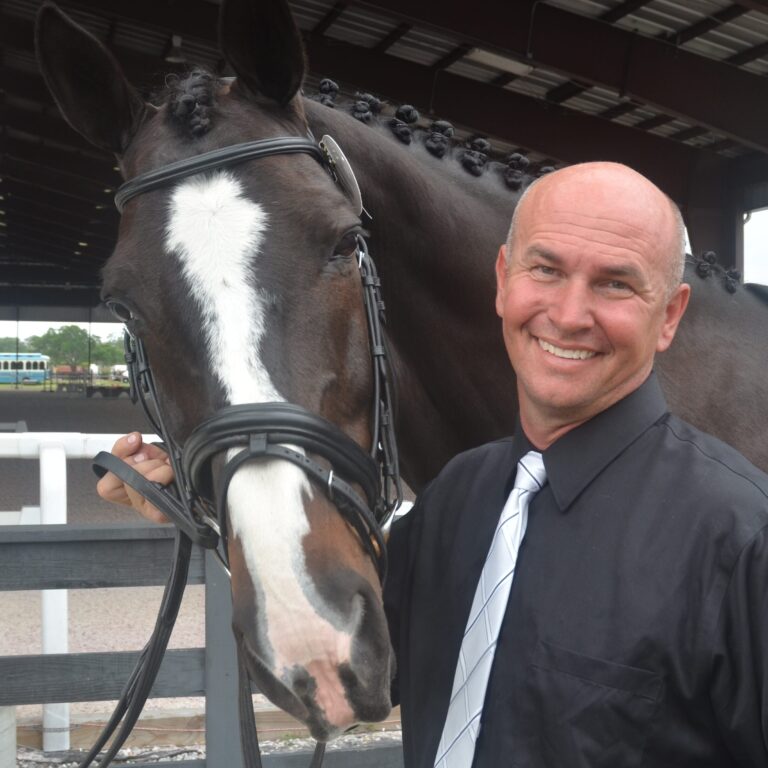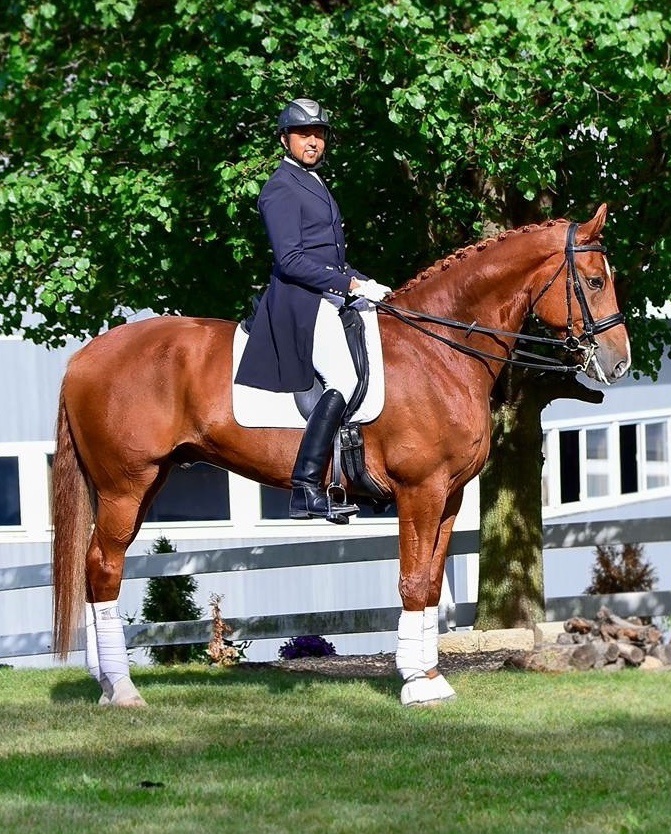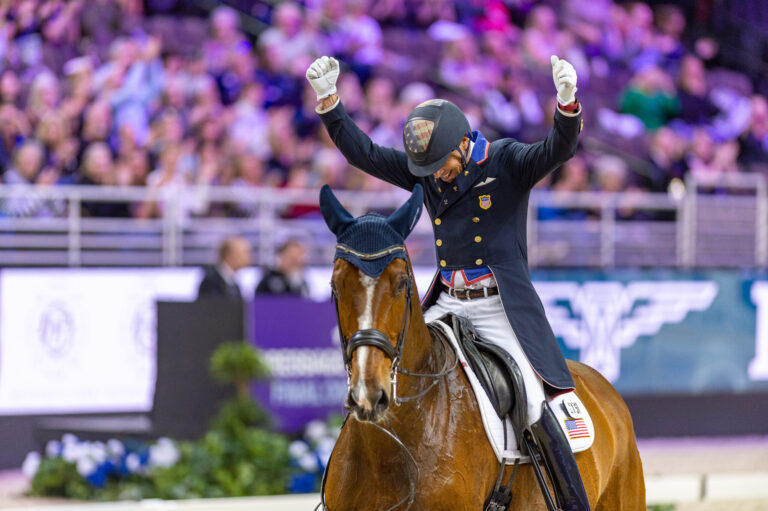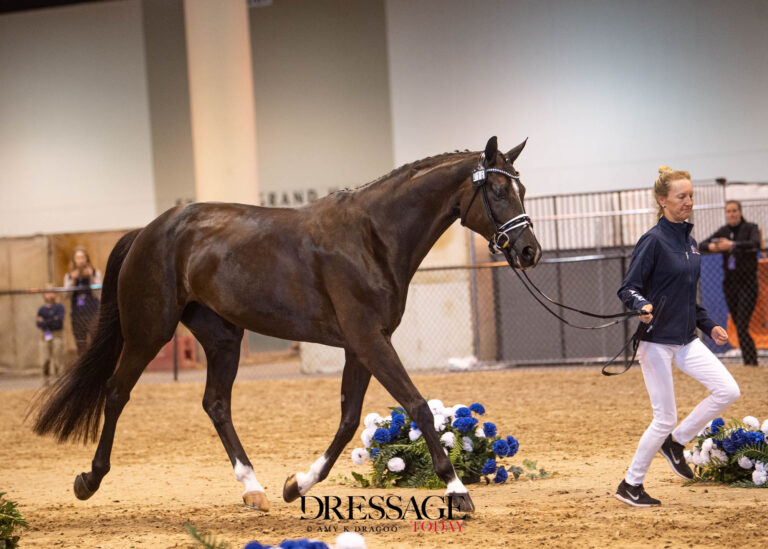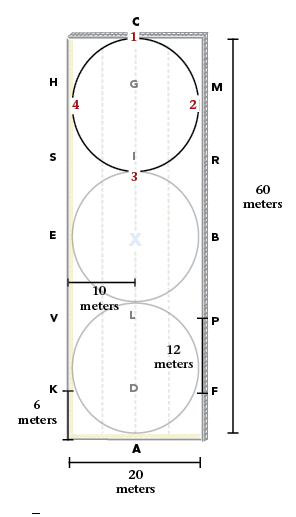Whether you’re new to dressage or you’ve mastered Grand Prix, it helps to have eyes on the ground when you ride, and the more experienced those eyes, the better. Even top clinicians learn from one another. But not everyone has regular access to top riders, trainers and judges. So, what’s a rider to do?
Accumulating information helps. With the plethora of books, magazines, DVDs and online training opportunities—everything from ebooks, videos, webinars and virtual classrooms—it’s easier than ever to obtain information, even excellent information, about the time-tested principles of dressage.
But it takes more than information to succeed in this sport. Most riders need help applying newly acquired principles as they move up the levels in dressage. Even seasoned riders need guidance and reminders on a regular basis. And since every horse is different, the same seasoned riders may find themselves in a training quandary when what works with one horse doesn’t work with another. Even riders who have regular access to excellent trainers benefit from the new perspective of another trainer.
That brings us to the dressage clinic.
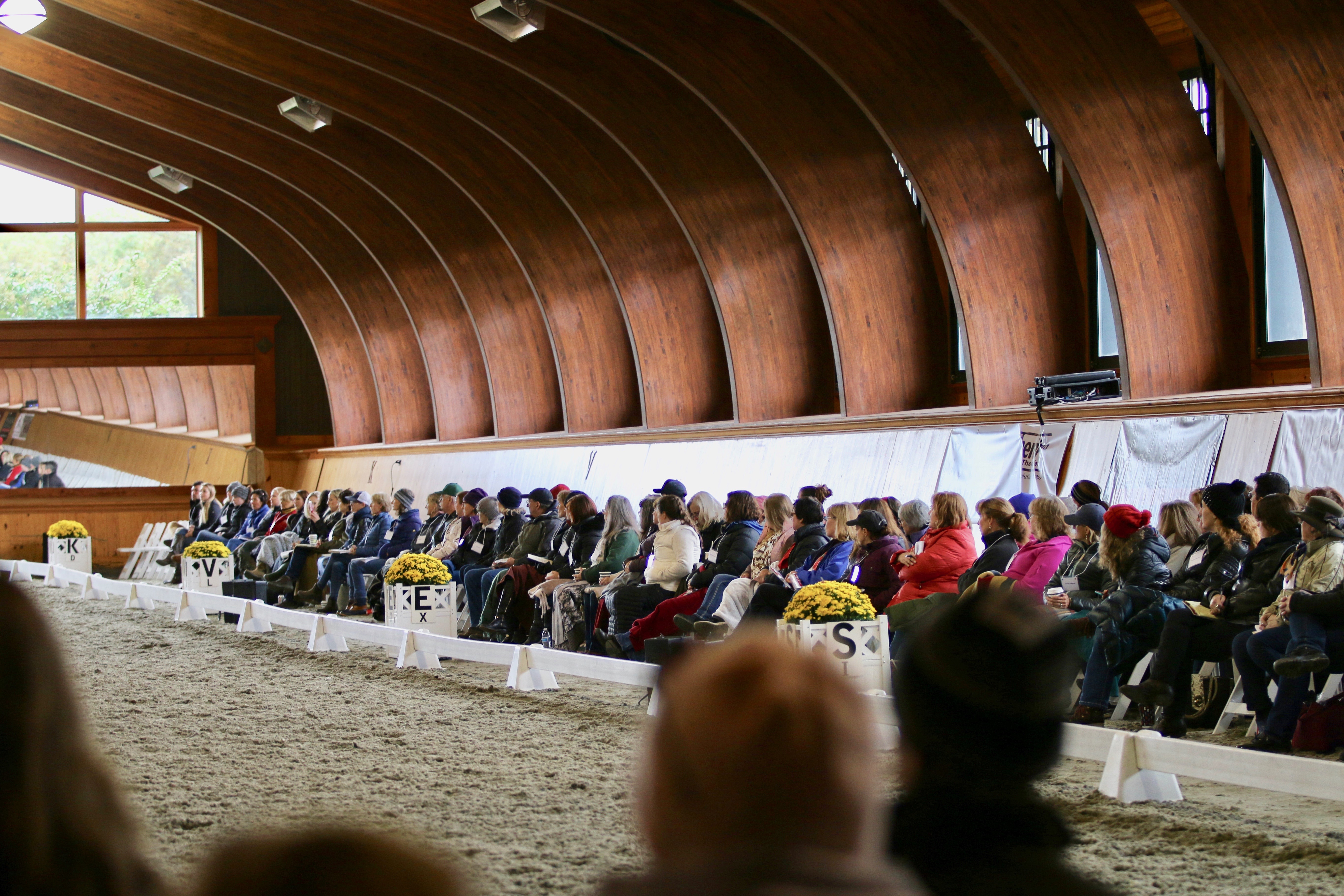
Observe an Expert at Work
At a dressage clinic a clinician is brought in to teach six to 10 riders (and horses) who might otherwise never have opportunity to learn directly from someone of that caliber. The clinician may be a current or former top rider, judge or trainer. Clinicians are generally well-known for their talent at the local, national or international level. Clinics offer an excellent opportunity for riders to experience a higher level or new approach to instruction.
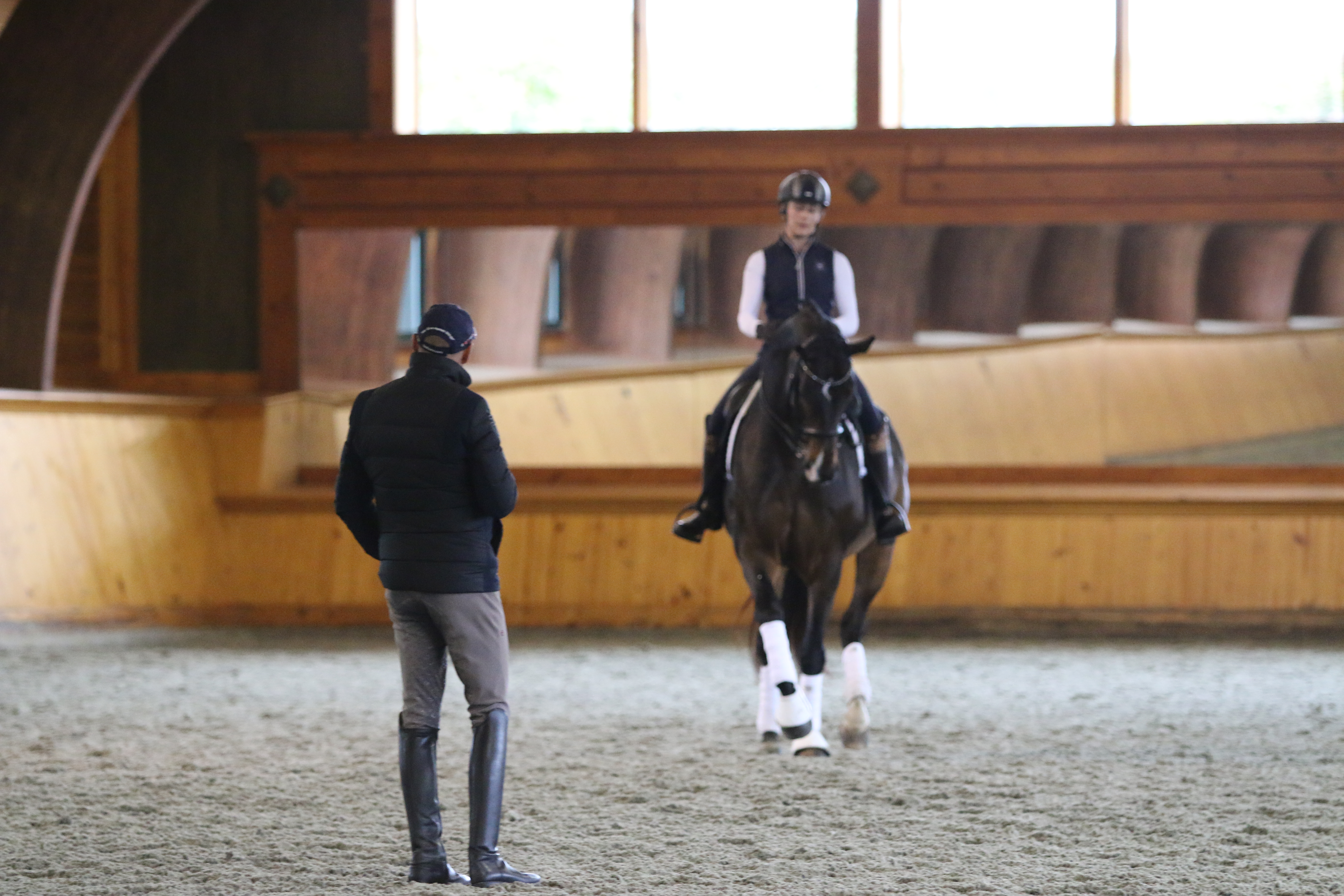
But what if you don’t want to ride in the clinic? Perhaps your horse is injured, or you are; or your budget forbids; or you’re simply not confident enough to ride in a clinic yet. No problem. Most clinics allow people to pay to observe—otherwise known as auditing a clinic. Many riders of all levels will audit with a clinician before riding with the clinician to get a sense for the clinician’s approach and expectations.
The Do’s and Dont’s
Though it’s generally a casual scene, there is an etiquette to auditing.
In general, unless the organizer has made provisions, you should plan to pack a chair, lunch, snacks and water. If you haven’t paid in advance, bring enough cash to cover the auditor’s fee. Be courteous. Obey parking and other rules (every venue will be different). Know the clinic start time. If you arrive late, you may disrupt the lesson or interfere with the organizer or volunteers who will have to step away from watching a lesson to help you check in. Top FEI rider and much sought-after clinician and trainer JJ Tate recommends you arrive at least 15 minutes early to register and take in the lay of the land then get settled in your seat before the clinic starts.
Although auditing is a mostly sedentary endeavor, it is not a passive process. When clinicians from around the country were queried for their best advice for auditors, their number one recommendation was to bring a pen and notebook. Heidi Wright, USDF silver medalist and owner of Long Meadow Farm in Malta, Illinois, has experience organizing clinics with famous clinicians like Charles DeKunffy, Christoph Hess and the late Walter Zettl. She advises, “Write down your observations and questions, and draw out exercises that are interesting to you.” Simultaneously engaging the mind and body—even with a seemingly simple task like taking notes—helps learning and retention.
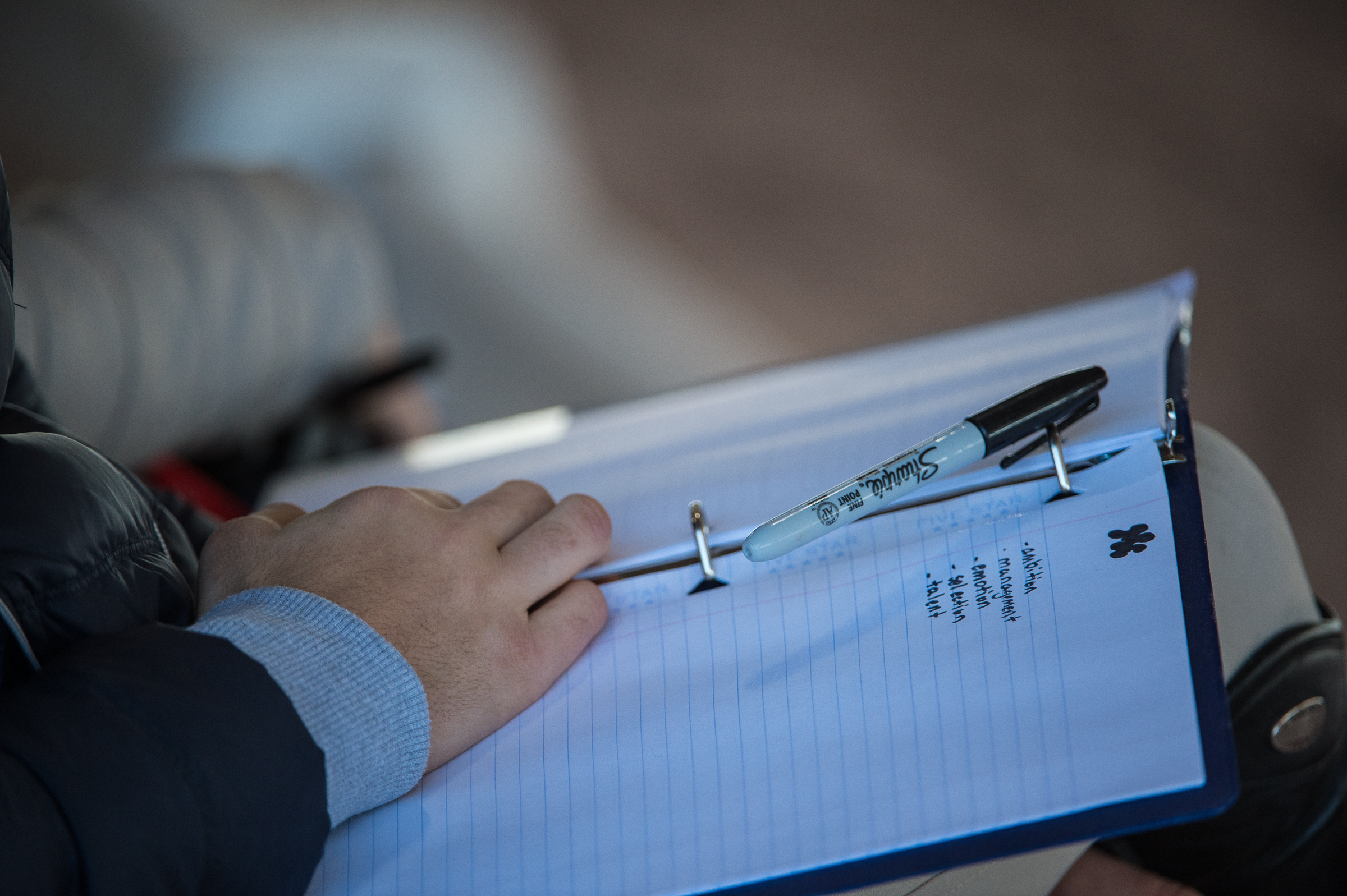
In addition to a notebook, experienced clinicians recommend auditors bring a friend, but while bringing a friend to the clinic is encouraged, chatting during the lessons is not. Debbie McDonald, technical advisor/chef d’équipe for U.S. Dressage, says, “Remember, this should not be a social event. Please take advantage of taking valuable information home with you by listening and not talking during sessions.” While it’s enjoyable to sit with friends, the real payback comes in the days and weeks following, when you and your friends discuss what you learned. To reap greater benefits, go over your notes alone and with your regular trainer, too, and consider sharing your experience by writing an article for your local dressage organization.
There are definite things auditors should avoid doing during lessons. Chatting and using cell phones are taboo, as is taking video or photographs without permission from the organizer, clinician and rider. Also, don’t interrupt a lesson to ask questions, don’t ask questions of the clinician about your own horse and don’t take over the Q&A time. Most clinicians will let you know when to ask your questions.
It is perfectly acceptable to quietly leave the arena for a break and stretch. And although not required or expected, it is appreciated when auditors find appropriate ways to pitch in—picking up manure, helping a rider, remaking coffee, etc. Just be conscientious of sudden noises or movements that might spook a horse. Common culprits in the clinic setting include crinkling plastic bags and bottles, aluminum can pop-tops, spreading a blanket, and opening an umbrella or lawn chair. While none of these activities is prohibited, be considerate with your timing. Put yourself in the rider’s boots.
Refrain from judging or criticizing riders and their horses. While auditing you’ll likely see a mix of riders, some maybe more and some maybe less accomplished than you. Be respectful of the riders and imagine being in their place. It takes courage to ride in front of a clinician and auditors and, as Wright says, “None of us knows all the obstacles, challenges and personal issues the rider is facing.” Riders know they need help; that’s why they’re there.
Avoid pointing out issues the clinician is not addressing—leave the teaching to the teacher! Most likely, the clinician is aware of the issue but has chosen to focus on another area at this time. It is not possible in one hour to address every need. If you see something that you would change, write it down, then look for something that is working well and note it. If you do feel the need to provide feedback, comment on what went well. Offer your encouragement and support, not your advice or criticism.
When the clinic is over, gather your belongings and properly dispose of any trash. On your way out be sure to thank the clinician, organizer, riders and volunteers. This is also a good time to make connections and ask about future clinics.
Grow Your Dressage Toolbox
Auditing a clinic is meant to be a low-stress, high-yield endeavor; you pay a small fee and you go home refreshed and encouraged. Most auditors can’t wait to get home to their horses and try out their new ideas. Many also find that as they gain familiarity with a clinician, venue and clinic format, their courage grows and they soon become clinic riders themselves.
The dressage clinic is an excellent place to see information put into play with on-the-spot guidance by top instructors. Martin Arnold, USDF gold medalist, says, “Take in as many clinics as you can. There is so much knowledge out there and every clinician has something to offer. Every clinic you take in, you are adding more tools to your dressage toolbox.”
Auditing Checklist
Before You Arrive
•Define one or two trouble-spots in your training that you hope to get answers for and write them down.
•Read up on the clinician to see if it’s realistic to expect he or she might provide insight for the kind of challenges you’re facing.
•Make arrangements so you can leave your dog and young children at home.
•Know the start time and plan to arrive 15 minutes early.
•Convince a friend or two to join you.
•Find out if preregistration is necessary or walk-ins are welcome.
•Have cash on hand (personal checks aren’t always welcome).
•Bring a notebook and pens.
•Pack a chair, lunch, snacks and water.
•Consider: Hand warmers, blanket, umbrella, sun screen.
Once You’re There
•Register—sign waivers, pay fee
•Locate refreshments (if any) and restrooms.
•Get settled in your seat.
•Silence your cell phone.
•Do not talk. Be quiet and respectful so your fellow auditors, the clinician and riders can all enjoy and get the most out of the clinic.
•Take notes and draw exercises you like.
•Record questions and save them for appropriate Q&A time.
•Be careful to avoid spooking a horse.
•Look for simple ways you can pitch in—remake coffee, pick up manure, help a rider, etc.
When It’s Over
•Gather your belongings.
•Properly dispose of any trash.
•Encourage and thank the riders.
•Thank the clinician, organizers and volunteers.
•Go ride your horse.
•Review your notes with your friends and trainer.
Characteristics of Savvy Auditors
•You have a real love for life-long learning.
•You have an open mind.
•You want what’s best for your horse.
•You’re kind and encouraging when dealing with others who are less accomplished than you.
•You’re considerate of horses and humans.
•You like to take the time and money you set aside for your horses and invest it wisely.
•You learn well with others.
How to Find Dressage Clinics Near You
•Join USDF and your local GMO and get on their mailing list
•Ask other riders and trainers
•Social Media—follow the clinicians and venues you like
Next time, in Part 2 of this series, we’ll discuss the details that surround riding in a clinic.


